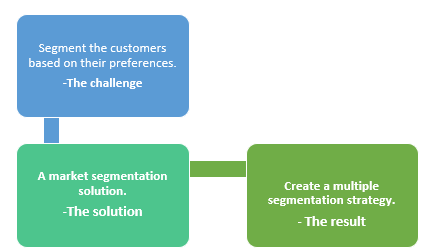In the US alone, it is estimated that the renewable energy sources can provide 80 percent of electricity by 2050.
The renewable energy industry is witnessing a transformation with the relative advances in technology, cost declines, and the influence of new financial structures. The industry at large comprises of energy sources including hydroelectric, wind, solar, and liquid biofuels. Despite the availability of fossil fuels, organizations in the renewable energy space are investing heavily on the R&D to meet the growing demands for cost-effective and environment-friendly energy sources. The recent international climate agreement is also focusing on promoting policy incentives for clean energy development. Apart from the regulatory government support, the growth of renewable sources energy space will also be marked by the commercialization of energy and the growing concern to minimize the reliability of fossil fuels for energy consumption. Although the renewable energy space is witnessing a promising growth, owing to the environmental concern, several factors may fuel the growth of the industry. They include:
High capital investments: With the growing environmental concern to shift toward clean energy, organizations are finding ways to improve their R&D capabilities and stay compliant with the government regulations. Investing heavily in R&D not only includes time but also includes the need for high capital investments. Also, the growing concern to minimize the use of fossil fuels to provide efficiency and productivity is further compelling organizations to leverage the use of renewable sources.
Intense competition: With the growing entry of global leaders, the renewable energy industry is witnessing the threat of new entrants offering similar products and services. This, in turn, is forcing organizations to include innovations to enhance their service offerings.
To address these challenges and adequately allocate the resources to meet the customer requirements, organizations in the energy sector are utilizing the need for a market segmentation study. Market segmentation can be defined as the practice of dividing customers into smaller segments based on their interests and spending habits.
The Business Challenge
- The Client: Renewable energy provider
- Area of Engagement: Market segmentation
The client, a renowned renewable energy provider, wanted to identify the potential customer segments and segment the customers based on their preferences. The client wanted to devise their marketing efforts to target specific and smaller groups. With the help of a market segmentation study, the client also wanted to identify the key segments and implement a segmentation strategy to deliver services for each specific segment. The primary concern of the client was to better match their offerings with that of the competitors and tailor pricing to meet the needs of each segment.

Want more information about our market segmentation solutions?
Our Journey
To efficiently segment the products to the end-users, the market segmentation experts at Infiniti carried out extensive research methodology comprising interviews and discussions with prominent stakeholders in the renewable energy space. Moreover, to gain a better perspective on the market scenario, the experts also compiled information across a wide array of secondary sources such as paid industry database, company presentations, and industry forums in the renewable energy space.
The Solution Benefits and the Business Impact
The market segmentation solution offered by Infiniti helped the renewable energy provider create multiple segmentation strategies to differentiate the markets based on geography, distribution, and price. The client was able to realign their marketing campaigns to target and position products effectively. The customer segmentation solution also helped the client target the most profitable market segments to maximize their returns on the investment.
The Future:
The future of renewable energy will be marked by innovations with a considerable number of households leveraging clean energy at their disposal. The renewable energy space will also help countries reduce global warming emissions, improve public health, and thereby, provide related job opportunities. Moreover, in an 80 percent renewable future, countries will witness a radical decline in the carbon emissions by 80 percent, and water use by 50 percent.




